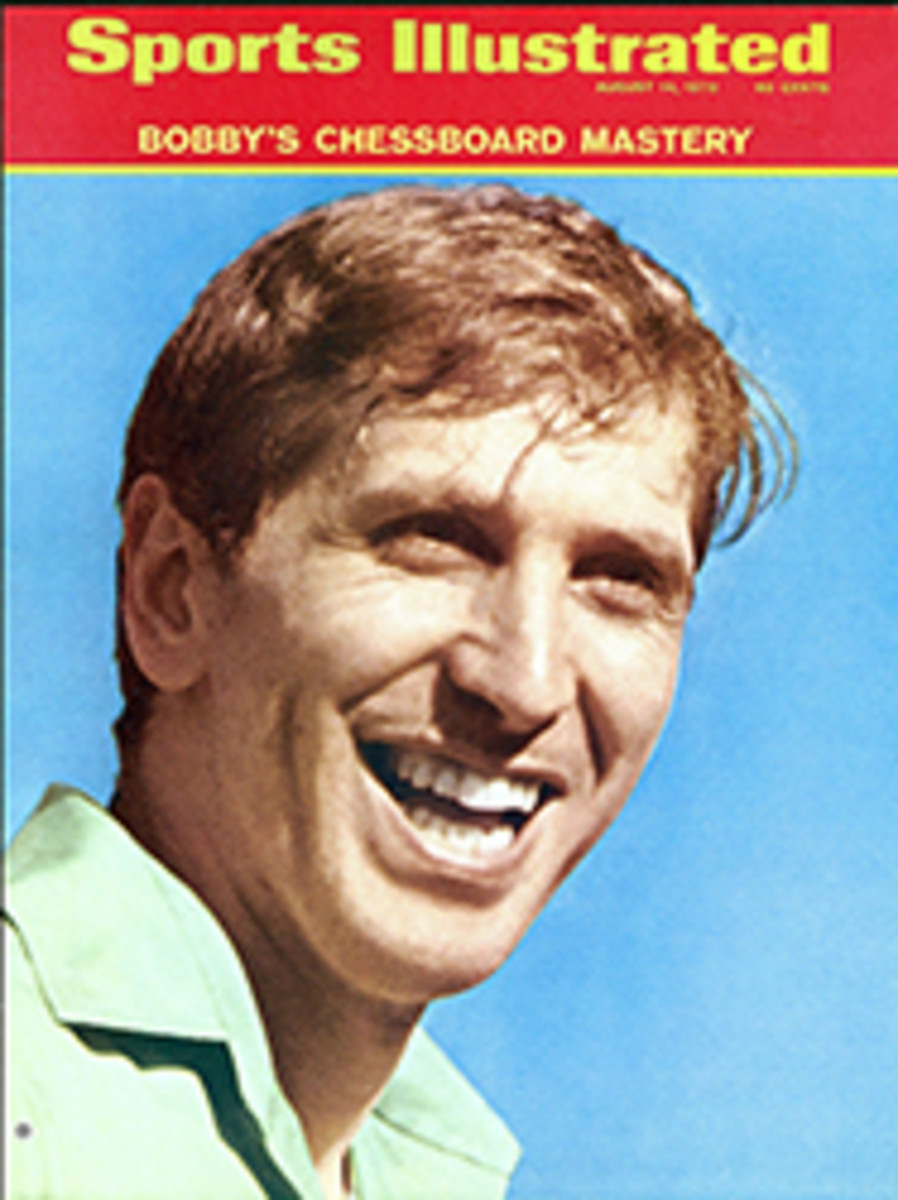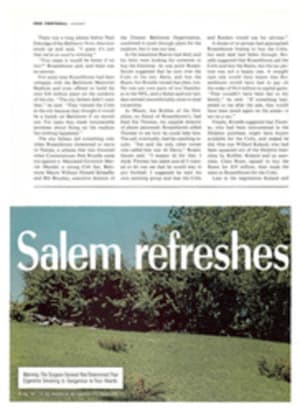
'The day of indignity is past'
When Clint Murchison Jr. set out at last to build his own football stadium—as any otherwise sane person might elect to do if he had a hundred million dollars or so and owned the world champion professional football team—he did it with such imagination that he may have changed the sport. Standing on the artificial turf inside the upside-down bowl of the new Texas Stadium the other day, a former Dallas Cowboy player said, "I have the odd feeling that the game people came here to see is no longer entirely on the field but has spread into the stands, especially into those opera boxes they call Circle Suites."
Artificial turf has made football look strange, anyhow. Take the foot out of the grass and put it on a carpet, and the game can seem to become an amusement, like the hotel ballroom boxing matches staged for gentlemen in dinner jackets. In an enormous, closed structure like the Astrodome, the game is incidental to the place. But in Texas Stadium the game is involved in the place. A tackle in the middle of the field can look up and sec himself on TV screens and at the same time see people with glasses of champagne watching him watching himself. And they are all together inside what resembles a Hilton space station—with a mile of carpeted halls, escalators, heating and air-conditioning outlets, 1,433,000 watts of lighting and tourist tours three days a week. All the customers in the chair seats, except the drinkers, are treated superbly, as Murchison promised they would be, but it is in the Circle Suites that the game is becoming a special event—composed of cocktail partying, live entertainment and electronic stimulation. And everybody under the roof can choose to watch what is going on inside the suites as well as what is happening on the field.
A suite more conspicuous than most has been called, among other things, the Let-'Em-Eat-Cake Room. In order to acquire it, Frederic Wagner and J.L. Williams, like the other 157 boxholders, had to buy $50,000 worth of revenue bonds from the community of Irving—one of Dallas' neighboring towns, which owns the Stadium with Murchison's backing. Then they had to buy 12 season tickets at $10 apiece to fill the available spaces and agree to pay dues for 12 memberships to the Stadium Club, the only place besides the suites where the drinking of liquor, wine or beer is allowed. For this, Wagner and Williams received a bare room with a concrete floor and sheet-rock walls.
So they called in a decorator and spent close to $40,000 on a Louis XIV outfit with a vaulted ceiling, a chandelier with 1,000 prisms, velvet tufted chairs, oil paintings, a refrigerator, sink, ice-maker, freezer, telephone, television and a bar staffed by a butler in white gloves.
The décor of the other suites varies from Spartan simplicity to cubicles that are fixed up in Ranch-house Plush, Neiman-Marcus Mod, Las Vegas Traditional, Psychedelic Flash, Molded Plastic Futurama, Tahitian Fantasy, and so forth. There is a tricky step down from some bars that could turn into a flying leap into the bleachers.
"Nobody has done that yet," says the assistant plant superintendent, Paul Peavy, "but people in the stands are always watching for it. Two or three hours after a game, when we're down here cleaning up, plenty of people are still in the suites having a few for the road, and you ought to see some of the things we see."
Since Irving is a dry town, ordinary fans who wish to arrive early or leave late tend to hang around the specialty food wagons outside the walls. Soon an auditorium with a revolving stage and three drive-in movies with folding screens will be added, making the stadium a $31,000,000 complex—all to be paid for by revenue bonds issued by a population of 106,000. Those who wish to get out of the stadium in a hurry are carried on escalators that, Peavy says, can empty 30,000 seats in the upper deck in 20 minutes.
Investigating the stadium halls behind the boxes is eerily like being in a gigantic hotel, what with the carpets, ashtrays on the walls and attendants in the rest rooms. Even before he decided to build a new stadium—after a long feud with Dallas oligarchs who were bent on keeping big events in the somewhat decrepit Cotton Bowl—Murchison was making a list of what he considered mistakes he saw in other structures, including new ones costing three times as much.
"There was a time when you could subject sports fans to any indignity, but that day is past, although most sports promoters don't yet realize it. The Dallas city council had their heads in the sand," Murchison says.
There has been a natural tendency to compare the Texas Stadium with the Astrodome in Houston. The former is smaller and cheaper but has more seats and offers an incomparably better view of the action, wherever it is taking place. "We could easily have closed up the hole in our roof, but I don't like watching football in the Astrodome," says Murchison. "Our fans are protected, but can still see the sky. We haven't totally ruled out the elements. Because of the competition of television, you have to cater to the customers as they have never been catered to in the past."
Yes, indeed, television. The Stadium Club has TV, there is a nine-inch monitor between every two seats in the press box, and the Circle Suites are studded with color TV (one has six)—all connected to the network telecast that is otherwise blacked out in the Dallas-Fort Worth area when the Cowboys are playing at home. Some Circle Suite sets are placed against rear walls so customers playing bridge with their backs to the field can still see the game.
Or, suppose, so Bob Hayes can catch a touchdown pass and rush back to watch himself on instant replay over the heads of people who are watching him watch himself. That is involvement that makes change for more than a dollar.

